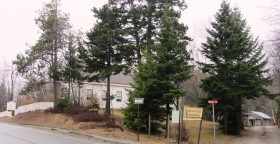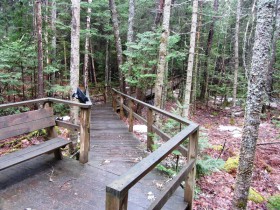(1865-1958), was a well-respected Maine ornithologist. At the age of 48, she found her true calling in life – the study of birds. After floating through one teaching job after another for 17 years, and a nervous breakdown, she remembered her childhood love of the outdoors and of the beautiful birds and their musical songs. Her knowledge of drawings and her artistic nature drew her toward photography.
Cordelia Stanwood was born in Ellsworth on August 1, 1865. She was the daughter of a prosperous Yankee merchant sea captain. Her mother was from Cape Breton Island, Nova Scotia. The eldest of five children, she was home schooled because she was viewed as a weak child with a delicate nature. Her grandmother taught her sewing, knitting and traditional women’s arts and her mother instructed her in reading.
In 1879 at age 14, her wealthy Aunt and namesake, Cordelia, invited her to Providence, Rhode Island to live with her and her husband, and attend city schools. Stanwood lived very well and flourished in the fine schools. She graduated sixth out of 60 from the Girls’ High School of Providence at age 21. One year later, in 1887, she graduated from the Providence Training School for Teachers. She began teaching at the Messer Street Training School, where her students adored her.
Four years later Stanwood was asked to become a Critic Teacher. She summered on Martha’s Vineyard to study for the critic position. While there, she met Henry Bailey, the drawing supervisor for the state of Massachusetts. He was a skilled technical, and botanical artist, who became an influential friend and mentor to Cordelia.
By 1892, Stanwood was earning a yearly salary of $650 as teacher and principal. Henry Bailey persuaded her to attend the Normal Arts School in Boston to study for a drawing instructor position. She graduated first in a class of one hundred, but found no jobs in this selective field. She returned to Providence to teach with a salary cut at $600.
Between 1892-1900, Stanwood took many teaching positions and moved frequently. She moved to Greenfield, Massachusetts and found a job that paid a salary of $750. She also took positions in Brookline, Massachusetts and Poughkeepsie, New York. This period of her life ended with a job in Braintree, Massachusetts, teaching drawing classes in 1901. She suffered a nervous breakdown and moved back to Ellsworth after a short time in a sanitarium near Boston.
A turning point in her life began when she started writing field notes on birds and nature in 1906, initiating the next fifty years of ornithology work and discovering her true calling. She impressed many people with her expertise, including John Burroughs noted nature essayist, and Frank Chapman editor of Bird-Lore. Her meticulous notes, reports and photographs were used in scholarly and popular publications such as Francis Herrick’s Life Histories of North American Birds series, and such other noted ornithologists as Arthur Cleveland Bent and Edward Howe Forbush.
Stanwood bought her first camera in 1916. Until then, she used borrowed equipment to photograph birds. Local photographer Embert Osgood of Ellsworth coached her on the use of her new equipment. Thirty-eight of her photos were selected for Howe Forbush’s Birds of Massachusetts. She is thought to be the first woman bird photographer.
Stanwood’s manuscript on New England birds, Firs and Feathers, was never published, although she did write many articles and had many photographs published. Some of her works were included in The Boys Scouts’ Yearbook, House Beautiful, Farm Mechanics, American Poultry Journal, and Nature Magazine.
At the age of 90, on November 20 1958, Stanwood died of cancer, penniless, in a state nursing home. She died virtually unknown except in the field of ornithology, recognized for her excellent fieldwork and considerable knowledge of wood warblers in Maine. She never married nor had any children. However, her rich contributions to the ornithological world are timeless; not many women of her era could boast the same.
Today her home is a nature center and site of the Stanwood Wildlife Sanctuary, where her photographs and field notes are on display courtesy of the Cordelia Stanwood Wildlife Foundation.
Additional resources
Bonta, Marcia Myers. “Cordelia Stanwood: Bird Woman of Ellsworth.” Women in the Field: America’s Pioneering Women Naturalists. College Station. Texas A&M University Press.1991. pp. 212-221.
Graham, Ada. Six Little Chickadees: A Scientist and Her Work with Birds. New York. Four Winds Press. c1982.
Richardson, Cynthia Watkins. Picturing Nature: Education, Ornithology and Photography in the life of Cordelia Stanwood: 1865-1958. Thesis (Ph.D.) in History–University of Maine, 2002.
Richmond, Chandler S. Beyond the Spring: Cordelia Stanwood of Birdsacre. Lamoine, Me. Latona Press. 1989.
Strom, Deborah, ed. “Cordelia Stanwood.” Birdwatching with American Women: A Selection of Nature Writings. New York. W.W. Norton & Co. 1986. pp. 92-98.
“Birdsacre” photograph. Stanwood Wildlife Sanctuary: 6 Mar. 2006. 24 Nov. 2007. http://www.birdsacre.com/index.html
Contributed by Elizabeth May-McGrath, Bowdoin, Maine, 2008.




